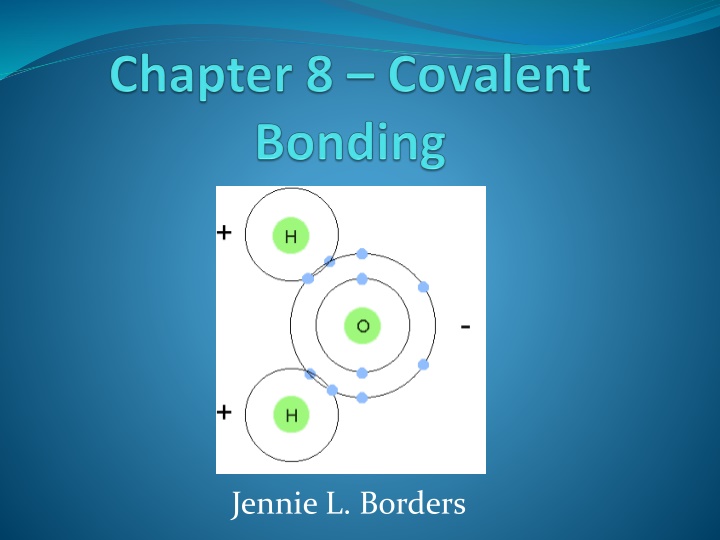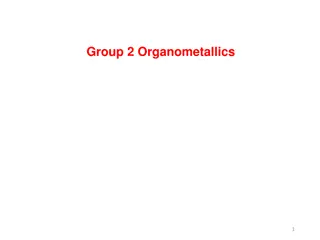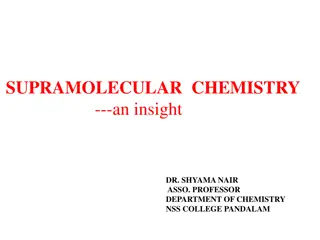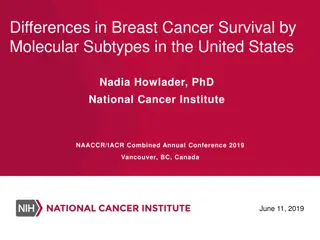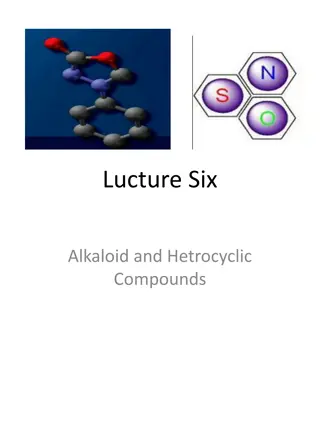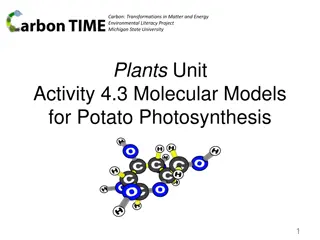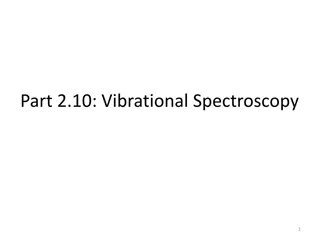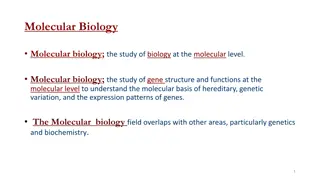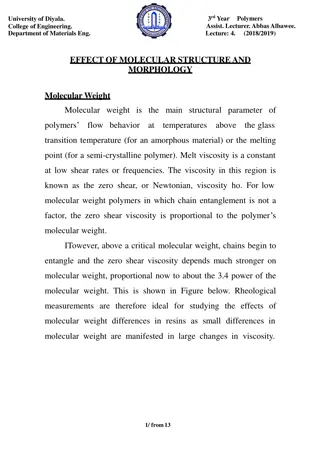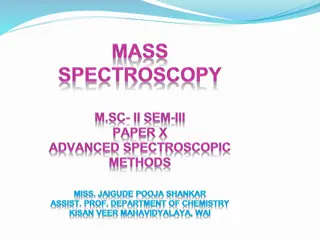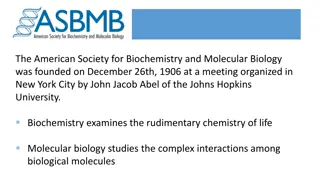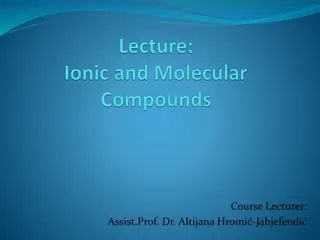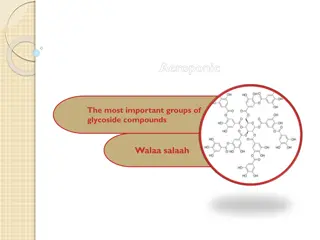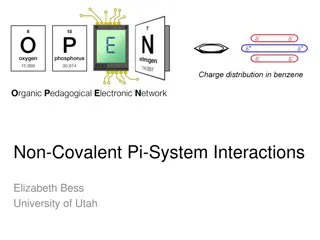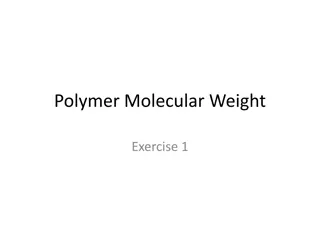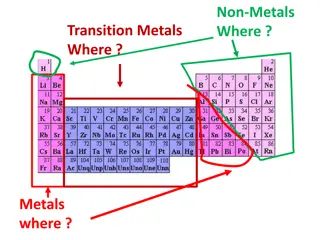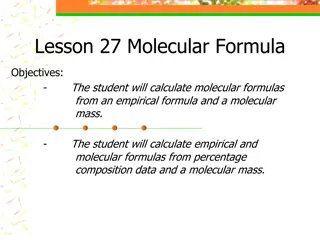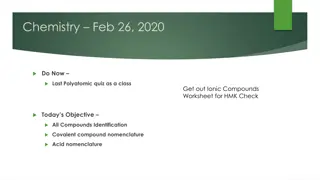Molecular Compounds
Explore the world of molecular compounds, covalent bonds, diatomic elements, and molecular formulas. Learn about the properties of molecular compounds, the nature of covalent bonding, and key differences from ionic compounds. Dive into the assessment questions to test your knowledge!
Download Presentation

Please find below an Image/Link to download the presentation.
The content on the website is provided AS IS for your information and personal use only. It may not be sold, licensed, or shared on other websites without obtaining consent from the author.If you encounter any issues during the download, it is possible that the publisher has removed the file from their server.
You are allowed to download the files provided on this website for personal or commercial use, subject to the condition that they are used lawfully. All files are the property of their respective owners.
The content on the website is provided AS IS for your information and personal use only. It may not be sold, licensed, or shared on other websites without obtaining consent from the author.
E N D
Presentation Transcript
Section 8.1 Molecular Compounds A covalent bond is formed between atoms held together by sharing electrons. A molecule is a group of atoms joined by covalent bonds. A diatomic molecule is 2 atoms bonded together.
Diatomic Elements There are 7 naturally existing diatomic elements. They are N2, O2, F2, Cl2, Br2, I2, and H2.
Properties of Molecular Compounds Molecular Compounds Low melting points Tend to be gases or liquids Made of nonmetals Made of covalent bonds Poorconductors Ionic Compounds high melting points crystalline solids metal and nonmetal ionic bonds conductor when molten or aqueous
Molecular Formulas A molecular formula is the chemical formula of a molecular compound. A molecular formula shows how many atoms of each elementa molecule contains. A molecular formula shows the actual number of atoms while a formula unit shows the lowest whole-number ratioof ions.
Section 8.1 Assessment 1. How are the melting points and boiling points of molecular compounds usually different from those of ionic compounds? 2. What information does a molecular formula provide? 3. What are the only elements that exist in nature as uncombined atoms? What term is used to describe such elements? 4. Describe how the molecule whose formula is NO is different from the molecule whose formula is N2O.
Section 8.1 Assessment 5. Give an example of a diatomic molecule found in Earth s atmosphere.
Section 8.2 The Nature of Covalent Bonding In ionic bonding, atoms transferelectrons to achieve noble gas configuration. In covalent bonding, atoms shareelectrons to achieve noble gas configuration. Most atoms share electrons until they have a total of 8 valence electrons (octet rule). However, hydrogen only needs 2 electrons to be stable.
Covalent Bonds A singlecovalent bond is created when 2 atoms share 1 pairof electrons. A dash represents a bond which is made of 2 electrons. An unshared pair of electrons, or a lone pair, is represented as dots.
Rules for Writing Lewis Dot Structures 1. Add up the total number of valence electrons. 2. Bond the atoms with single bonds. (Single atoms go in the middle.) 3. Add electrons until each atom has a full octet and each hydrogen has a duet (2 electrons). 4. Add up total valence electrons in Lewis dot structure and compare to the total from step 1.
Sample Problems Write the Lewis dot structure for the following: H2 Cl2 H2O
Practice Problems Write the Lewis dot structure for the following: Br2 HF NH3
Multiple Bonds A double bond occurs when 2 atoms share two pairs of electrons. It is represented by 2 dashes which equal 4 electrons. A triple bond occurs when 2 atoms share three pairs of electrons. It is represented by 3 dashes which equal 6 electrons.
Lewis Dot Structures with Multiple Bonds When writing the Lewis dot structures, following the 4 steps we learned. When you add up the total number of electrons in your Lewis dot structure, sometimes it will not equal the total from step 1. For every extra electron pairyou have, you need to add 1 more bond in your structure.
Sample Problem Write the Lewis dot structure for the following: O2 CO2
Practice Problems Write the Lewis dot structures for the following: N2 HCN
Coordinate Covalent Bond A coordinate covalent bond is a bond formed when one atom donates both of the shared electrons. In a regular bond, each atom donates 1 electron to form the bond.
Polyatomic Ions When writing the Lewis dot structure for a polyatomic ion, you have to take into account the charge when you add up the number of valence electrons in step 1. After you draw the Lewis dot structure, you have to put the whole structure in brackets and write the charge.
Sample Problems Write the Lewis dot structure for the following: SO4-2 OH-
Practice Problems Write the Lewis dot structure for the following: PO4-3 NH4+ CN-
Bond Dissociation Energy The bond dissociation energy is the energy needed to break a bond. As the number of bonds increases, the bond dissociation energy increases. Single < Double < Triple
Resonance (Honors) A resonance structure is a structure that occurs when it is possible to draw two or more valid Lewis dot structures for a substance. Ex: O3 When resonance occurs, you should separate the possible structures with a double sided arrow. The actual structure is a hybrid of the resonance structures.
Sample Problem (Honors) Write the Lewis dot structures for the following: O3
Practice Problems (Honors) Write the Lewis dot structures for the following: NO3- CO3-2
Exceptions to the Octet Rule Some molecules are exceptions to the octet rule. ODD NUMBER - Some atoms have an odd number of electrons. This usually occurs with nitrogen. The odd electron goes to the central atom. LESS THAN 8 Some atoms have less than 8 electrons. This usually happens with elements 1-5. MORE THAN 8 Some atoms have more than 8 electrons. This usually happens with S, P, the halogens, and some noble gases.
Sample Problem Write the Lewis dot structure for the following: NO2 BF3 PCl5
Practice Problem Write the Lewis dot structure for the following: BeCl2 SF6 ClO2
Section 8.2 Assessment 1. What electron configurations do atoms usually achieve by sharing electrons to form covalent bonds? 2. When are two atoms likely to form a double bond between them? A triple bond? 3. How is a coordinate covalent bond different from other covalent bonds? 4. How is the strength of a covalent bond related to its bond dissociation energy?
Section 8.2 Assessment 5. What kinds of information does a structural formula reveal about the compound it represents? 6. Draw the electron dot structures for the following molecules. a. H2S b. PH3 c. ClF
Section 8.3 Bonding Theories (Honors) The VSEPR (valence shell electron pair repulsion) theory states that the repulsion between electron pairs causes molecular shapes to adjust so that the valence electron pairs stay as farapart as possible. Lone pair electrons alter the shape more than bonding electrons due to the fact that they spread out more.
VSEPR Model Possible shapes for AB2: Bonding 2 0 linear Nonbonding Shape
VSEPR Model Possible shapes for AB3: Bonding 3 0 trigonal planar Nonbonding Shape 2 1 bent
VSEPR Model Possible shapes for AB4: Bonding 4 0 tetrahedral Nonbonding Shape 3 1 trigonal pyramidal 2 2 bent
VSEPR Model Possible shapes for AB5: Bonding 5 0 trigonal Nonbonding Shape bipyramidal 4 1 seesaw
VSEPR Model Possible shapes for AB5: Bonding 3 2 T-shaped Nonbonding Shape 2 3 linear
VSEPR Model Possible shapes for AB6: Bonding 6 0 octahedral Nonbonding Shape 5 1 square pyramidal 4 2 square planar
Section 8.4 Polar Bonds and Molecules Covalent bonds involve sharing electrons between atoms. When the atoms in the bond pull equally, the bonding electrons are shared equally, and the bond is nonpolar. When the atoms in the bond pull unequally, the bonding electrons are pulled closer to one atom, and the bond is polar.
Polarity An atom s strength is measured by the electronegativity (the ability to attract electrons). The larger the electronegativity the more strongly an atom attracts electrons. The more electronegative elements gets a - (partial negative) charge and the less electronegative element gets a + (partial positive) charge.
Sample Problem Determine the polarity of the following bonds: + - H - Cl H Cl F - P - + F - P
Practice Problem Determine the polarity of the following bonds. - + Cl - C Cl C O - S - + O - S
Dipole Moment A dipole moment occurs when a molecule is polar and has a partially positive side and a partially negative side. A dipole is represented by an arrow with a plus sign on one end. The arrow points toward the more electronegative element.
Sample Problem Draw the dipole moments for the following: H F H2O
Practice Problem Draw the dipole moment for the following: H S H - S N - H N - H
Polar Molecules When polar molecules are placed between oppositely charged plates, the partially negative side is attracted to the positive plate and the partially positive side is attracted to the negative plate.
Determining Polarity Bond polarity is determined based on the difference in electronegativity between the to bonded atoms. Bond Type Electronegativity Difference Nonpolar <0.5 Polar 0.5 - 2 Ionic >2
Sample Problem Are the following bonds nonpolar, polar, or ionic? N H polar F F nonpolar Ca - Cl ionic
Practice Problem Are the following bonds polar, nonpolar, or ionic? H Br polar C O polar Li - O ionic
Attractions Intramolecular forces are the attractive forces within a single molecule. Ex: the bonds Intermolecular forces are the attractive forces that exist between multiple molecules. Ex: dipole attractions
Intermolecular Forces London dispersion forces are the weakest intermolecular forces that exist between nonpolar molecules. Dipole-dipole attractions exist between polar molecules. Hydrogen bonding is a particularly strong dipole attraction that occurs between hydrogen and an extremely electronegative element (N, O, or F).
Strength of Intermolecular Forces London Dispersion < Dipole-Dipole < Hydrogen Bonding
